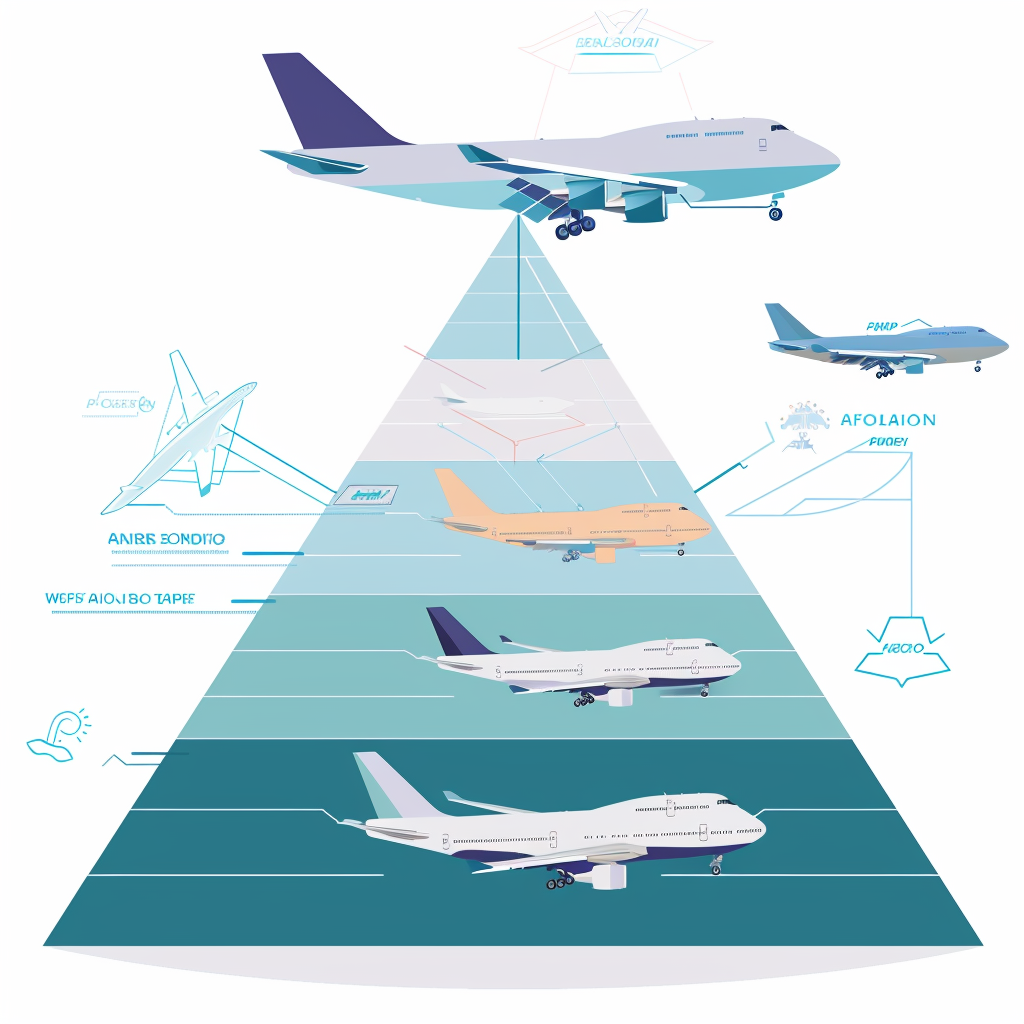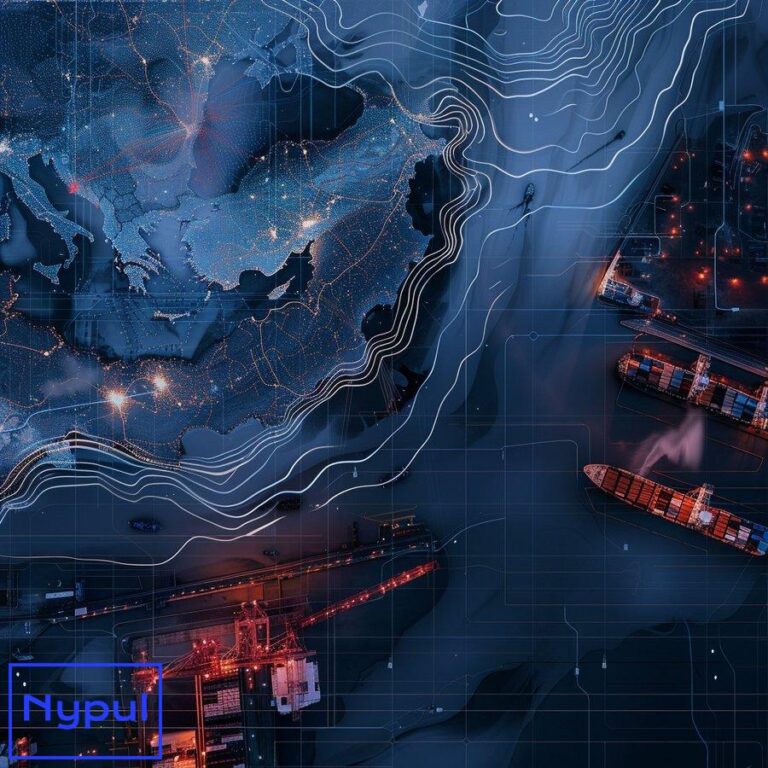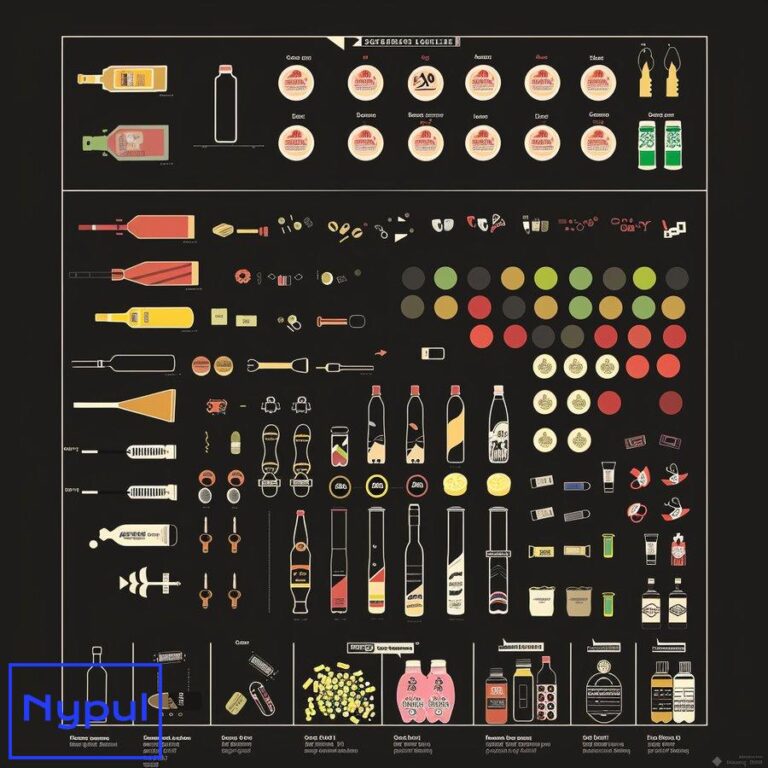What Mode of Transportation Is the Best Choice for Shipping Small High Value Time Sensitive Products
Why are small, high-value, time-sensitive products challenging to ship?
Shipping small, high-value, time-sensitive products presents unique challenges that require careful consideration and specialized handling. These items, often referred to as “critical shipments,” demand extra attention due to their inherent characteristics and the potential risks involved in their transportation.
Size and Value Disparity
The disproportionate relationship between the size and value of these products creates a significant challenge. A small package containing a valuable item, such as a microchip or a rare gemstone, may not appear to warrant special treatment based on its dimensions alone. However, its high monetary value necessitates enhanced security measures and careful handling throughout the shipping process.
Time Sensitivity
The time-critical nature of these shipments adds another layer of complexity. Many industries rely on just-in-time delivery systems, where even minor delays can result in substantial financial losses or operational disruptions. For example, a specialized medical device needed for an urgent surgery or a crucial component for a manufacturing line cannot afford to be delayed.
Security Concerns
High-value items are prime targets for theft, requiring robust security protocols throughout the supply chain. This includes secure packaging, constant monitoring, and potentially armed escorts in some cases. The need for heightened security can complicate logistics and increase shipping costs significantly.
Insurance and Liability
Insuring small, high-value items presents its own set of challenges. The cost of insurance for these shipments can be substantial, often requiring specialized policies. Additionally, determining liability in case of loss, damage, or delay can be complex, especially when multiple parties are involved in the shipping process.
Customs and Regulatory Compliance
International shipments of high-value items often face stringent customs regulations and import/export restrictions. Navigating these complex regulatory landscapes requires expertise and can lead to delays if not managed properly. Certain items, such as electronic components or precious metals, may be subject to additional scrutiny or documentation requirements.
Environmental Sensitivities
Many high-value, time-sensitive products are sensitive to environmental factors such as temperature, humidity, or vibration. Maintaining optimal conditions throughout the shipping process is crucial but can be challenging, especially when transporting items across different climate zones or using various modes of transportation.
Tracking and Visibility
Providing real-time tracking and visibility for these critical shipments is essential but can be technologically challenging. Implementing sophisticated tracking systems that offer minute-by-minute updates and immediate alerts for any deviations from the planned route or schedule is crucial for managing stakeholder expectations and ensuring timely interventions if issues arise.
Specialized Handling Requirements
Many high-value, time-sensitive items require specialized handling procedures. This may include the use of anti-static packaging for electronic components, temperature-controlled containers for pharmaceuticals, or vibration-dampening materials for delicate instruments. Ensuring that these specific requirements are met at every stage of the shipping process can be logistically complex.
Balancing Speed and Cost
Finding the right balance between speed and cost is a significant challenge when shipping these products. While air freight is often the preferred method due to its speed, it comes at a premium price. Shippers must carefully weigh the urgency of delivery against the increased transportation costs to make informed decisions that align with their business objectives.
Last-Mile Delivery Challenges
The final leg of the journey, known as last-mile delivery, presents unique challenges for high-value, time-sensitive items. Ensuring secure and timely delivery to the end recipient, which may involve signature requirements or specific delivery windows, can be complicated in urban areas with traffic congestion or in remote locations with limited access.
Shipping small, high-value, time-sensitive products requires a comprehensive approach that addresses these multifaceted challenges. Successful transportation of these critical items demands meticulous planning, specialized expertise, and a robust logistics network capable of providing the necessary speed, security, and reliability. As global supply chains continue to evolve, innovative solutions and technologies will play an increasingly important role in overcoming these challenges and ensuring the safe and timely delivery of these valuable shipments.
How does air freight compare to other transportation modes for these products?
When it comes to shipping small, high-value, time-sensitive products, air freight stands out as a preferred mode of transportation. However, to fully appreciate its advantages, it’s essential to compare air freight with other transportation modes. This comparison will highlight why air freight is often the go-to choice for critical shipments while also acknowledging scenarios where alternative methods might be considered.
Speed and Transit Time
Air Freight: Unparalleled in terms of speed, air freight can transport goods across continents in a matter of hours or days. This rapid transit time is crucial for time-sensitive shipments where every hour counts.
Ocean Freight: Significantly slower, with transit times ranging from weeks to months for intercontinental shipments. While not suitable for urgent deliveries, it remains a viable option for less time-sensitive cargo.
Ground Transportation (Truck/Rail): Offers moderate speed for short to medium distances. It can be efficient for regional transportation but becomes less practical for long-distance or international shipments.
Reliability and Predictability
Air Freight: Highly reliable with fixed schedules and fewer touchpoints, reducing the risk of delays. Weather-related disruptions are generally shorter compared to other modes.
Ocean Freight: Subject to various factors that can affect reliability, including port congestion, weather conditions, and longer customs clearance processes. Transit times can be less predictable, especially for long-distance routes.
Ground Transportation: Reliability varies depending on the distance and route. It can be affected by traffic, road conditions, and border crossings for international shipments.
Global Reach
Air Freight: Offers extensive global coverage, reaching virtually any destination with an airport. This global network is particularly valuable for international trade of high-value goods.
Ocean Freight: Provides access to major ports worldwide but may require additional ground transportation for inland destinations, potentially increasing transit time and handling risks.
Ground Transportation: Limited to contiguous land masses or regions connected by road or rail networks. International ground shipping often involves complex border crossings and regulatory compliance.
Cargo Capacity and Size Limitations
Air Freight: Generally limited to smaller cargo sizes and weights due to aircraft capacity constraints. This aligns well with small, high-value products but can be a limitation for larger shipments.
Ocean Freight: Offers significantly larger cargo capacity, suitable for bulk shipments or oversized items. However, this capacity is often unnecessary for small, high-value products.
Ground Transportation: Provides flexible capacity options, from small parcels to full truckloads, but faces size and weight restrictions on public roads.
Security and Risk Management
Air Freight: Offers enhanced security measures, including stringent screening processes and controlled access to cargo areas. This high level of security is crucial for valuable items.
Ocean Freight: While security measures are in place, the longer transit times and multiple handling points can increase the risk of theft or damage.
Ground Transportation: Security levels vary widely depending on the specific service and route. High-value shipments often require additional security measures, such as GPS tracking or armed escorts.
Environmental Impact
Air Freight: Has the highest carbon footprint per ton-mile of cargo transported. This environmental impact is a growing concern for companies focused on sustainability.
Ocean Freight: More environmentally friendly for large shipments over long distances, with lower emissions per ton-mile compared to air freight.
Ground Transportation: Offers a middle ground in terms of environmental impact, with rail being more eco-friendly than trucking for long-distance transport.
Cost Considerations
Air Freight: Generally the most expensive option, with costs significantly higher than other modes. However, for high-value, time-sensitive goods, the speed and reliability often justify the premium.
Ocean Freight: Typically the most cost-effective for large shipments over long distances. However, the slow speed and potential for delays can offset these savings for time-critical, high-value items.
Ground Transportation: Offers competitive pricing for short to medium distances. Cost-effectiveness decreases for long-distance or international shipments due to fuel consumption and labor costs.
Handling and Specialized Care
Air Freight: Provides specialized handling for sensitive cargo, including temperature-controlled containers and careful loading procedures. This is crucial for delicate or environmentally sensitive high-value items.
Ocean Freight: Offers specialized containers (e.g., reefers for temperature control) but may expose cargo to more environmental stresses due to longer transit times and sea conditions.
Ground Transportation: Can provide specialized handling and equipment, such as air-ride suspension for delicate items, but may face challenges in maintaining consistent conditions over long distances.
Customs and Regulatory Compliance
Air Freight: Often benefits from streamlined customs processes at major airports, facilitating faster clearance for international shipments. However, strict security regulations can sometimes lead to additional screening and potential delays.
Ocean Freight: May face more complex and time-consuming customs procedures at seaports, potentially leading to longer clearance times for international shipments.
Ground Transportation: Customs processes for cross-border shipments can vary widely, with potential for delays at land border crossings. However, initiatives like electronic pre-clearance are improving efficiency.
To illustrate the key differences between these transportation modes for small, high-value, time-sensitive products, consider the following comparison table:
| Factor | Air Freight | Ocean Freight | Ground Transportation |
|---|---|---|---|
| Speed | Fastest (Hours to Days) | Slowest (Weeks to Months) | Moderate (Days to Weeks) |
| Global Reach | Extensive | Limited to Ports | Limited to Connected Landmass |
| Security | Highest | Moderate | Varies (Low to High) |
| Cost | Highest | Lowest | Moderate |
| Environmental Impact | Highest | Lowest | Moderate |
| Handling for Sensitive Items | Excellent | Good | Good |
| Customs Clearance Speed | Fast | Slow | Varies |
Air freight emerges as the superior choice for shipping small, high-value, time-sensitive products due to its unmatched speed, global reach, and enhanced security measures. While it comes at a premium cost and has a higher environmental impact, these factors are often outweighed by the critical nature of the shipments. Ocean and ground transportation, while more cost-effective and environmentally friendly, generally lack the speed and security necessary for these types of goods.
However, the choice of transportation mode should always be evaluated on a case-by-case basis, considering factors such as the specific nature of the product, urgency of delivery, budget constraints, and environmental considerations. In some scenarios, a multimodal approach combining different transportation methods might offer the best balance of speed, cost, and reliability.
As technology and logistics practices continue to evolve, the gaps between these transportation modes may narrow, potentially offering more nuanced solutions for shipping high-value, time-sensitive products in the future. For now, air freight remains the gold standard for critical shipments where time and security are paramount concerns.
What types of air freight services are available for urgent shipments?
Air freight services for urgent shipments have evolved to meet the diverse needs of businesses and industries that rely on swift, secure transportation of high-value, time-sensitive goods. These services range from standard air cargo to highly specialized, door-to-door solutions. Understanding the various options available is crucial for shippers to select the most appropriate service for their specific requirements.
Next Flight Out (NFO)
Next Flight Out service is designed for the most urgent shipments where time is of the essence. This option ensures that the cargo is placed on the very next available flight to its destination, regardless of the airline or route.
Key Features:
– Fastest possible delivery time
– Often includes priority handling at airports
– Can be significantly more expensive than other options
– Ideal for critical parts, medical supplies, or time-sensitive documents
Same Day Air
Same Day Air service guarantees that shipments will be delivered on the same day they are picked up, provided the distance allows for such rapid transit.
Key Features:
– Delivery within hours, often on the same calendar day
– Typically limited to domestic or short international routes
– Includes expedited pickup and delivery services
– Suitable for perishable goods, urgent medical supplies, or critical replacement parts
Express Air Freight
Express Air Freight services offer a balance between speed and cost, providing faster transit times than standard air cargo but at a more reasonable price point than NFO or Same Day services.
Key Features:
– Delivery typically within 1-3 days, depending on the route
– Often includes door-to-door service
– Utilizes dedicated air freight networks of major carriers
– Suitable for a wide range of time-sensitive shipments
Consolidated Air Freight
Consolidated Air Freight involves grouping multiple shipments from different customers into a single consignment to reduce costs while still benefiting from air transport speed.
Key Features:
– More cost-effective than express services
– Slightly longer transit times due to consolidation process
– Ideal for less urgent shipments or when balancing cost and speed
– Often used for regular, scheduled shipments of high-value goods
Charter Air Freight
Charter Air Freight involves hiring an entire aircraft for a dedicated shipment, offering maximum flexibility and control over the shipping process.
Key Features:
– Complete control over flight schedule and route
– Ideal for oversized or unique cargo that doesn’t fit standard aircraft
– Highest level of security and handling control
– Most expensive option, typically used for extremely high-value or time-critical shipments
Time-Definite Services
Many air freight providers offer time-definite services that guarantee delivery by a specific date and time, often with financial penalties for late delivery.
Key Features:
– Guaranteed delivery windows (e.g., by 9 AM, 12 PM, or end of business day)
– Often includes proactive monitoring and intervention to ensure on-time delivery
– Suitable for businesses with strict just-in-time inventory systems or critical deadlines
Temperature-Controlled Air Freight
Specialized air freight services for temperature-sensitive goods, such as pharmaceuticals, biotechnology products, or certain electronics.
Key Features:
– Maintains specific temperature ranges throughout the entire journey
– Utilizes specialized containers and monitoring equipment
– Complies with industry-specific regulations (e.g., GDP for pharmaceuticals)
– Essential for products that can be compromised by temperature fluctuations
High-Value Cargo Services
Tailored services for extremely valuable items, such as precious metals, artwork, or high-end electronics.
Key Features:
– Enhanced security measures, including armed escorts in some cases
– Specialized handling and packaging protocols
– Often includes real-time tracking and monitoring
– May involve dedicated aircraft or secure compartments on commercial flights
Dangerous Goods Air Freight
Specialized services for shipping hazardous materials or dangerous goods that comply with IATA and other regulatory requirements.
Key Features:
– Strict adherence to international regulations for dangerous goods transport
– Specialized packaging and labeling requirements
– Limited to certain aircraft types and routes
– Requires trained personnel for handling and documentation
Humanitarian and Relief Air Freight
Specialized services for urgent shipments related to disaster relief, humanitarian aid, or emergency response situations.
Key Features:
– Priority handling and expedited customs clearance
– Often involves collaboration with government agencies and NGOs
– Can include charter flights to remote or disaster-affected areas
– Crucial for delivering life-saving supplies and equipment in crisis situations
To help shippers navigate these options, consider the following comparison table of air freight services for urgent shipments:
| Service Type | Transit Time | Cost | Flexibility | Suitable for |
|---|---|---|---|---|
| Next Flight Out | Hours | Highest | High | Extremely urgent, critical parts |
| Same Day Air | Same day | Very High | High | Perishables, urgent medical supplies |
| Express Air Freight | 1-3 days | High | Moderate | Time-sensitive business shipments |
| Consolidated Air Freight | 3-5 days | Moderate | Low | Regular high-value shipments |
| Charter Air Freight | Custom | Highest | Highest | Unique or oversized urgent cargo |
| Time-Definite Services | Guaranteed | High | Moderate | Just-in-time inventory, critical deadlines |
| Temperature-Controlled | Varies | High | Moderate | Pharmaceuticals, sensitive electronics |
| High-Value Cargo | Varies | Highest | High | Precious goods, high-end products |
| Dangerous Goods | Varies | High | Low | Hazardous materials |
| Humanitarian | ASAP | Varies | High | Emergency relief supplies |
Selecting the appropriate air freight service for urgent shipments requires careful consideration of several factors:
Urgency of Delivery: Assess how quickly the shipment needs to reach its destination. This will help determine whether services like Next Flight Out or Same Day Air are necessary, or if a slightly longer transit time is acceptable.
Value and Nature of Goods: Consider the monetary value and sensitivity of the items being shipped. High-value or delicate items may require specialized handling and security measures available through dedicated services.
Budget Constraints: Balance the need for speed against the cost of the service. While expedited options offer the fastest transit times, they come at a premium price.
Destination and Route: Evaluate the origin and destination points, as well as any potential transit locations. Some services may be limited to certain routes or regions.
Regulatory Compliance: For international shipments or regulated goods, ensure that the chosen service can meet all necessary customs and regulatory requirements.
Size and Weight of Shipment: Consider the dimensions and weight of the cargo, as this may impact the choice of service, especially for oversized or heavy items.





